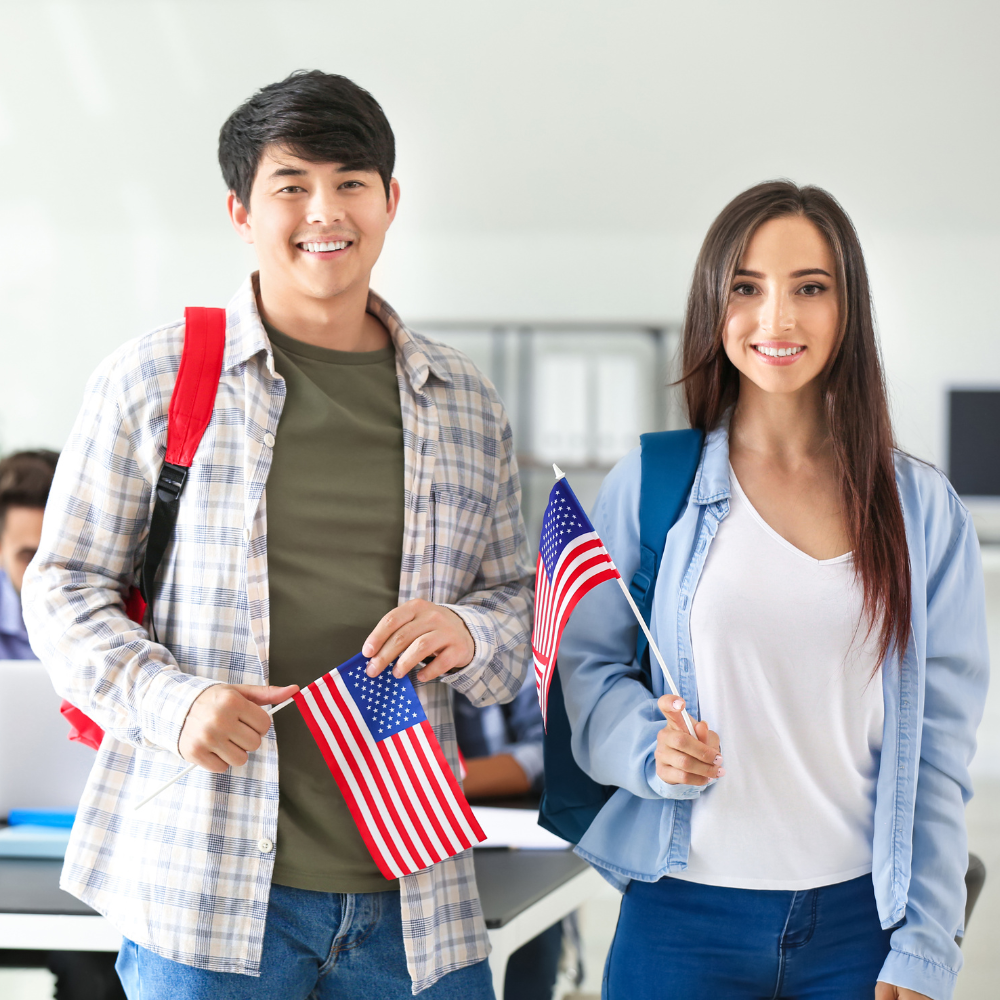Depending on your study plan and the type of school you intend to attend in the United States, you will need either an F visa or an M visa.
Citizens of foreign countries who wish to enter the United States are generally required to obtain either a nonimmigrant visa for temporary stay or an immigrant visa for permanent residence. Studying in the United States requires you to have a student visa.
Depending on the type of study you intend to pursue in the US, you will require a certain visa.
The American government offers three different types of student visas:
Depending on your goals and the type of work you intend to operate, there are various US work visa categories.
The various categories of temporary work visas for the United States are as follows:
– Student Visa F:
You need the student visa F to enter the United States to attend:
– Student Visa M:
You need the student visa M to enter the United States to attend:
It is not possible for students to travel under the Visa Waiver Program or with a visitor visa (A) to study in the United States, you need a student visa (F or M). Tourists entering on a visitor (B) visa or through the Visa Waiver Program (VWP) may not study after entering, except for recreational study (non-credit).
A Visitor (B) visa may be appropriate for short periods of recreational study. It is permissible to enrol in a short recreational course of study with a visitor (B) visa, which is not for credit toward a degree or academic certificate, but for recreational purposes.
On a visitor (B) visa, study leading to a U.S. degree or certificate is not permitted, even for a short time. If a student is enrolled in a distance learning program that requires time on the institution’s U.S. campus, a student visa (F or M) is required.
First, you must apply to a SEVP-approved school in the United States. Once the SEVP-approved school accepts your enrollment, you must register for the Student and Exchange Visitor Information System (SEVIS) and pay the SEVIS I-901 fee. You will receive a Form I-20 from the SEVP-approved school. Upon receiving the Form I-20 and registering in SEVIS, you may apply for a student (F or M) visa at a U.S. Embassy or Consulate. You must present Form I-20 to the consular officer at your visa interview.
If To live with you in the United States while you study, your spouse and/or children must also enrol in SEVIS, obtain individual Form I-20s from the SEVP-approved school, and apply for a visa (but they do not have to pay the SEVIS fee).
Entry into the United States is not guaranteed by a visa. It is only through the issuance of a visa that a foreign citizen is able to travel to a U.S. port-of-entry (generally an airport) to request permission to enter the United States. It is the responsibility of the Department of Homeland Security (DHS), and U.S. Citizenship and Immigration Services (CBP) officials at the ports of entry to determine whether a person should be permitted to enter the United States of America.
A CBP official will make this decision after you present your passport, visa, and Form I-20 at the port of entry. The CBP official will issue you with an admission stamp or a paper Form I-94, Arrival/Departure Record, as soon as you are permitted entry into the United States.
Our immigration consultants regularly assist international students in moving to or extending their stay in the USA to pursue their education. Fill out the contact form to get started with your USA study visa application process.
The visa application process involves several steps. You may be required to complete these steps in a different order depending on the American Embassy or Consulate where you apply.
Student acceptance at a SEVP-approved school
An interview may be required of any visa applicant by consular officers.
As a rule, you will need to schedule an appointment for your visa interview with the U.S. Consulate or Embassy in your country of residence. It is possible for you to schedule your interview at any United States Embassy or Consulate; however, you should be aware that you may have difficulty qualifying for a visa outside of your permanent residence.
The waiting time for a visa interview appointment depends on the location, the season, and the type of visa you are applying for, so you should apply for your visa as soon as possible.
Fill out the contact form to find out how long it will take to schedule an interview for a nonimmigrant visa.
New Students – Student (F and M) visas can be issued 120 days before the start date of a course of study. Your student visa will not allow you to enter the United States more than 30 days before the start date.
Students who are continuing students can apply for student (F and M) visas at any time, provided they are enrolled in a SEVP-approved school or institution. Students continuing their studies may enter the United States at any time before classes start.
Pay the non-refundable visa application fee before your interview, if required. Depending on your nationality, you may also be required to pay a visa issuance fee if your visa is approved
Before your visa interview, gather and prepare the following documents:
This is a training program that provides trainees with the opportunity to obtain training, other than graduate medical or academic training, that is not available to them in their native countries, and which also includes practical training programs in the education of children who have mental, physical, or emotional disabilities.
An immigration officer will determine whether you are eligible for a visa and, if so, which visa category is suitable for your purpose of travel during your visa interview. To receive the visa category for which you are applying, you must establish that you meet the requirements under U.S. law.
As part of the application process, your fingerprints will be scanned digitally, without ink. This is usually done during your interview, but it can vary depending on where you are.
Depending on the outcome of your visa interview, your application may need to be processed further administratively. The consular officer will inform you if further processing is required for your application.
You may have to pay a visa issuance fee (depending on your nationality) and arrange for the return of your passport and visa once your visa has been approved.


At Royal Migration, we understand the complexities of USA immigration. Our team is dedicated to providing clear, accurate, and up-to-date information to help you achieve your goals in the USA. Browse through our comprehensive FAQs below for quick answers and valuable insights. If you need further assistance, don’t hesitate to contact our experts for personalized guidance.
As soon as you receive your I-20, it is strongly recommended that you apply for your non-immigrant student visa. To ensure you get an early and timely date you may apply at any time. The application for a student visa can be made up to 120 days before the start date indicated on your I-20, but not earlier than this date.
As long as the student’s schedule does not exceed 20 hours per week, full-time students on F visas are allowed to work on campus. It is permissible for an applicant to seek employment off campus after one year of being in student status, as long as USCIS authorizes them to do so. The student advisor at your university will be able to provide you with more information.
Students on F or M visas cannot enter the United States earlier than 30 days before the start date of their program. You must apply and qualify separately for a visitor (B) visa if you wish to enter earlier than 30 days before your start date.
As soon as you are admitted to the United States by U.S. Customs and Border Protection (CBP) officials in visitor (B) visa status, you must apply separately to the U.S. Citizenship and Immigration Services (USCIS) for a change of status to student (For M) status prior to the start of your study program. In some cases, you will not be able to begin your course of study until your change of status has been approved, which may result in longer processing times. It is also possible for you to depart the United States and then reenter the country on your student visa (F or M).